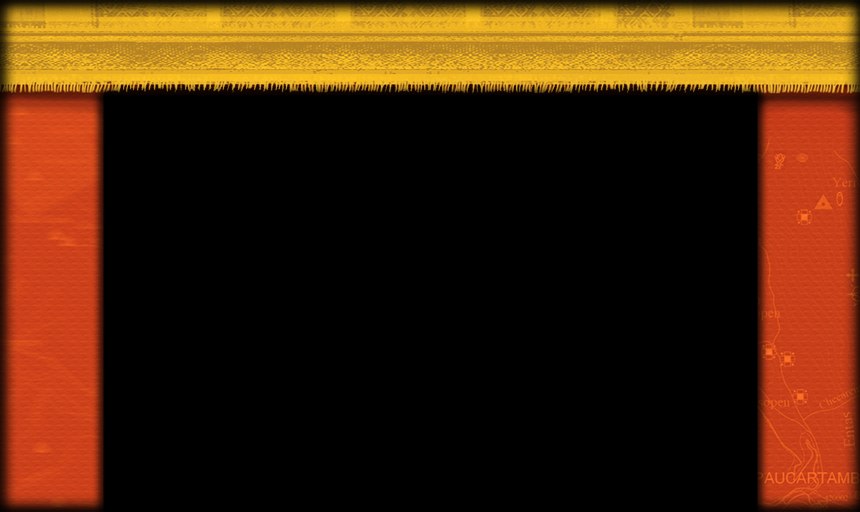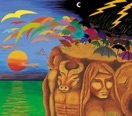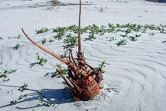
Camina el Autor:
Felipe Guaman Poma de Ayala
9:30 min.

Guaman Poma wrote the 1,179 pages of the Nueva Coronica in Spanish, Quechua, Aymara and other indigenous languages, as a letter to the Spanish king Felipe III. His main purpose was to denounce the sufferings of indigenous peoples under unjust Spanish rulers and to critique the reverse world ("mundo al reves") imposed in Peru by the colonial order. In addition to his words, written in remarkable pictographic calligraphy, the author illustrated his work with 400 captivating full-page drawings which, arguably, made him the first Peruvian visual ethnographer. In "Camina el Autor" and throughout his work, Guaman Poma employs a sui generis combination of multilingual, intercultural and dialogical strategies as well as discursive codes and literary genres in a manner that seems to precede the transcultural, postmodern styles and tropes of our days. The richness of his work can be better appreciated as a reading performance, when enhanced by the sonic presence and the oral sensuousness that inspired him.
The reading in the video is performed by Fredy Amilcar Roncalla, a Peruvian intellectual, writer and artisan based in New Jersey, who also dedicates Guaman Poma an intimate guitar composition of his own. The soundtrack is by Andean composer and maestro Daniel Kirwayo from his classic album Taki Onqkoy. The video has been published on January 18, 2011, in honor of the centennial birthday of Jose Maria Arguedas, the famous Peruvian writer who belongs to the same cultural legacy and the creative tradition inaugurated by Guaman Poma.
Recorded in Baltimore, December 2010
Directed by Wilton Martinez / Production: Wilton Martinez & Fredy Amilcar Roncalla
Reading: Fredy A. Roncalla / Camera & editing: Wilton Martinez
Original text & drawings: Nueva Coronica y Buen Gobierno by Felipe Guaman Poma de Ayala (1615)
Print text: El Primer Nueva Coronica y Buen Gobierno de Felipe Guaman Poma de Ayala,
edited by John V. Murra & Rolena Adorno, Transl. Jorge L. Urioste (1980)
Images: Digital edition of Nueva Coronica y Buen Gobierno, The Royal Library website,
Music: "Tautintam Violonchallay" & excerpts from “Taki Onqkoy” by Daniel Kirwayo
Live guitar: Interpreted by Fredy A. Roncalla
Production Assistant: Emilio Martinez
Duration: 9:30 minutes
An intimate reading of "Camina el Autor," a key chapter in El Primer Nueva Coronica y Buen Gobierno by
Guaman Poma de Ayala (1615). Since the discovery of his manuscript in 1908, Guaman Poma is considered a preeminent "Inca chronicler" and his oeuvre has been extensively studied by historians, anthropologists and other scholars. His ideas have been appropriated in many ways and for diverse causes and though his name has become emblematic of Andean identity constructions, little is known about Guaman Poma as a person, about his creative spirit and artistic sensibility. Through a direct reading of his words, this video seeks to engage with the author as an artist and a poet in his own right. (continues below)





-
-
References
-
Adorno, Rolena. 2001. Guaman Poma and His Illustrated Chronicle from Colonial Peru: From a Century of Scholarship to a New Era of Reading / Guaman Poma y su crónica ilustrada del Perú colonial: un siglo de investigaciones hacia una nueva era de lectura. Copenhagen: The Royal Library and Museum Tusculanum Press, University of Copenhagen.
-
Adorno, Rolena. 2000. Guaman Poma: Writing and Resistance in Colonial Peru. Austin: University of Texas Press.
-
Adorno, Rolena. 1989. Cronista y príncipe: La obra de don Felipe Guaman Poma de Ayala. Lima: Pontificia Universidad Católica del Perú.
-
Adorno, Rolena. 1983. "La soledad común de Waman Puma de Ayala y José María Arguedas," Revista Iberoamericana 122 (1983): 143-148.
-
Guaman Poma de Ayala, Felipe. [1615] 1980. El primer Nueva corónica y buen gobierno [1615], editado por John V. Murra y Rolena Adorno, traducciones del quechua por Jorge L. Urioste. 3 tomos. Siglo Veintiuno, Mexico, D.F.
-
López-Baralt, Mercedes. 1988. Icono y conquista: Guamán Poma de Ayala. Madrid: Hyperion.
-
Núñez Cáceres, Javier. 1968. Felipe Huaman Poma de Ayala: su obra y la poesía indígena prehispánica. Madrid: [s. n.].


Documentary
Advocacy
Creative
EthnoVisions


